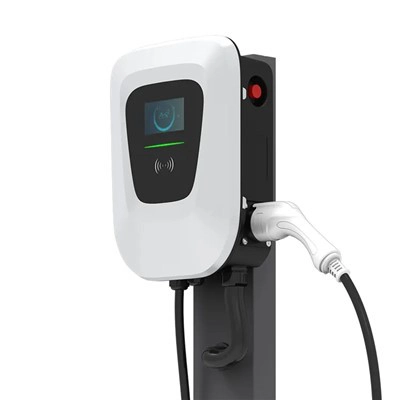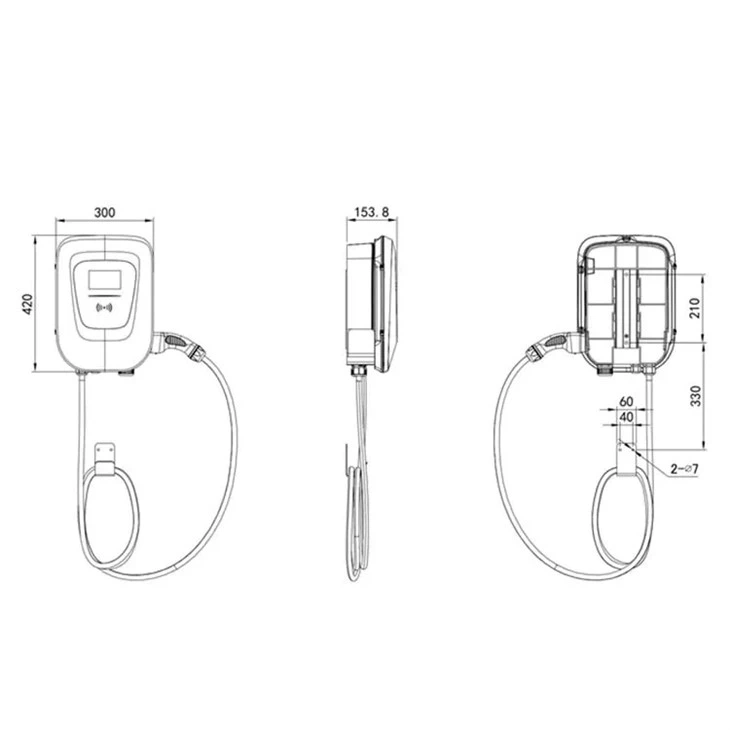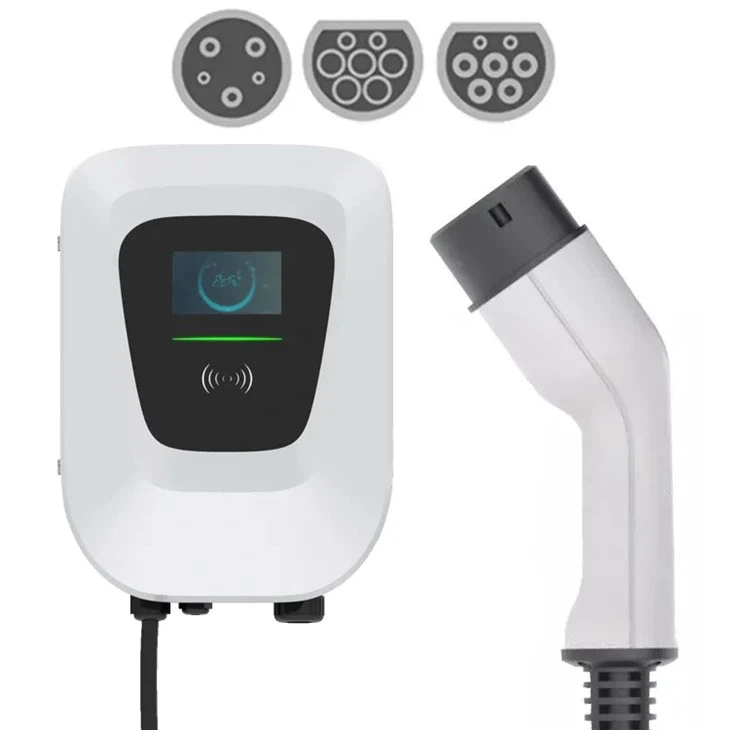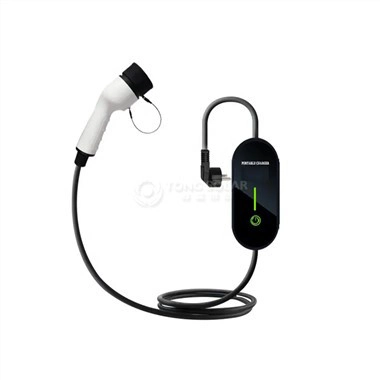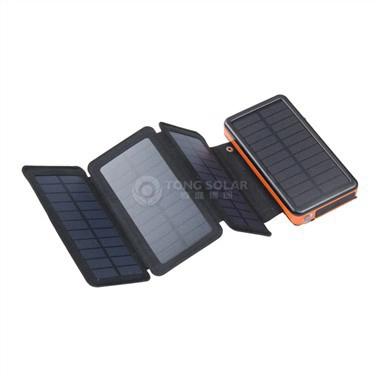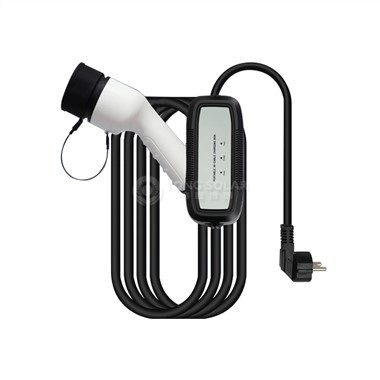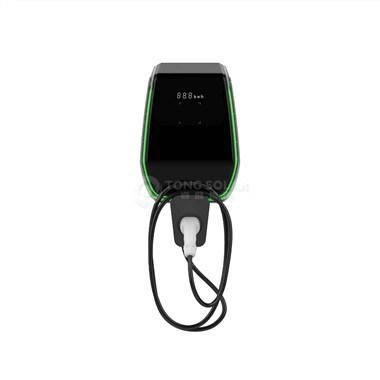Electric Vehicle Charging Pile Description
An AC Electric Vehicle Charging Pile is a type of charging station that supplies alternating current (AC) to the battery of an electric vehicle. Charging piles can be slow (Level 1 or 2) or fast (Level 3), and can be installed at homes, public places, or EV charging stations. AC charging piles typically use Level 1 or Level 2 charging and can charge an EV overnight or in a few hours.
They are commonly used in residential or workplace charging and can be installed indoors or outdoors. A charging pile consists of a power supply unit, a control unit, and a plug that is compatible with the vehicle's charging port. The charging process is managed by the control unit, which ensures the safe and efficient transfer of energy to the vehicle's battery.
This Charging pile can be designed as a pedestal type or wall box type. 3.7kW - 22kW optional.

Parameter

Features of EV Charging Pile
1. Charging Capacity: AC charging piles can offer different charging capacities, ranging from 3.7 kW to 22 kW, depending on the level of charging (Level 1, 2, or 3). Our Electric Vehicle Charging Pile has 16A and 32A for choice, with rated power available for 3.7kW, 7.4kW, 11kW, and 22kW.
● Connector: An AC charging pile typically includes a plug that is compatible with the vehicle's charging port, allowing for easy and convenient charging.
● Control Unit: A control unit manages the charging process, ensuring the safe and efficient transfer of energy to the vehicle's battery. It may also include features such as charging status monitoring, power control, and time schedule.
● Cable Management: Some AC charging piles may be equipped with a cable management system, allowing for neat and convenient storage of the charging cable when not in use.
● Payment System: Some AC charging piles, particularly those in public spaces, may be equipped with a payment system, allowing for billing and control of access.
● Safety Features: AC charging piles are equipped with various safety features, such as overcurrent protection, short-circuit protection, and ground fault protection, to ensure the safe and reliable operation of the charging station.
2. Characteristics
● Wonderful & Modern Design
Designed with a sleek, technologically advanced look and practicality in mind, the charger boasts a streamlined appearance. With a modular functional design, users can customize configurations to meet their specific needs.
● Easy to Operate
Various charging methods can be selected based on the situation, such as inserting the charging cord, using an RFID card to initiate and halt charging, or utilizing the App for control, to prevent unauthorized usage. With a user-friendly interface and straightforward operation, every charging experience is hassle-free and secure.
● Safety & Durable
Features DC 6mA+ Type A AC 30mA protection and boasts an impressive IP55 waterproof rating. Equipped with flame-retardant, moisture and mildew-resistant, and salt-spray-proof materials, this charger can withstand various climates, ensuring its longevity
● Reliable
Certified by TUV and CE, the equipment undergoes rigorous testing and inspection, gaining recognition from international organizations. Compliant with several global standards, its reliable quality is ensured. Featuring a MID-certified electricity meter.
.jpg)
Application scenario of using EV Charging Pile?
Residential Area / Parking Lot / Commercial Building / Fleet
● Public Places: AC charging piles are often installed in public places such as shopping centers, parks, and rest areas, providing EV drivers with convenient and accessible charging options.
● Workplace Charging: They can be installed in workplace parking lots, allowing employees to charge their EVs during the workday.
● Residential Charging: They can also be installed in residential areas, providing a convenient and fast charging option for homeowners.
● Fleet Charging: The piles can be used to charge commercial fleets of EVs, providing a fast and efficient charging option for fleet operators.
● Urban and Rural Charging Networks: AC EV charging piles are a key component in the development of urban and rural charging networks, providing EV drivers with accessible and reliable charging options across a wide geographic area.
Using AC electric vehicle (EV) charging pedestals has several advantages
● Public Access: AC charging pedestals are often located in public places, making them readily accessible to EV drivers.
● High Charging Capacity: AC charging pedestals typically have a higher charging capacity than wall box chargers, allowing for faster charging times.
● Cable Management: AC charging pedestals are often equipped with cable management systems, providing convenient and neat storage for charging cables.
● Payment System: AC charging pedestals in public spaces often have payment systems in place, allowing for billing and control of access to the charging station.
● Safety Features: Electric Vehicle Charging Pile or pedestals are equipped with various safety features, such as overcurrent protection, short-circuit protection, and ground fault protection, to ensure the safe and reliable operation of the charging station.
● Brand Awareness and Promotion: AC charging pedestals can be used as a platform for brand awareness and promotion, providing opportunities for companies to display their logos and engage with customers.
What is the difference between an EV wall box and an EV charging pile?
A wall box is a compact, wall-mounted charging station, often used for home or workplace charging. It typically connects to a standard electrical outlet and has a plug-in design, making it easy to install. Wallboxes are designed to be convenient and space-saving and are often equipped with charging management features such as power control, time schedule, and charging status monitoring. EV wall box, EV charging pile and EV charging gun, and EV charging cable gun all can be provided.
An EV charging pile is a standalone charging station, which can be freestanding (DC) or mounted on a pedestal (AC Type 1 or Type 2). It is often used in public places such as shopping centers, parks, and other locations. It is typically equipped with a cable management system for convenient use. The charging process is usually managed through a control unit and payment system, which allows for public access and billing.
In summary, the main difference between an EV wall box and an Electric Vehicle Charging Pile is their physical design and intended usage, with wall boxes being compact and designed for home or workplace charging, and charging piles being larger and designed for public use. AC charging piles are also widely used at home.
Package

Hot Tags: Electric Vehicle Charging Pile, China, suppliers, wholesale, Customized, in stock, price, quotation, for sale, best
